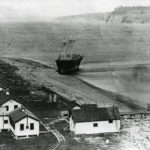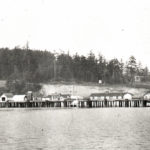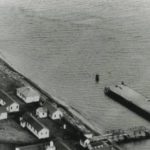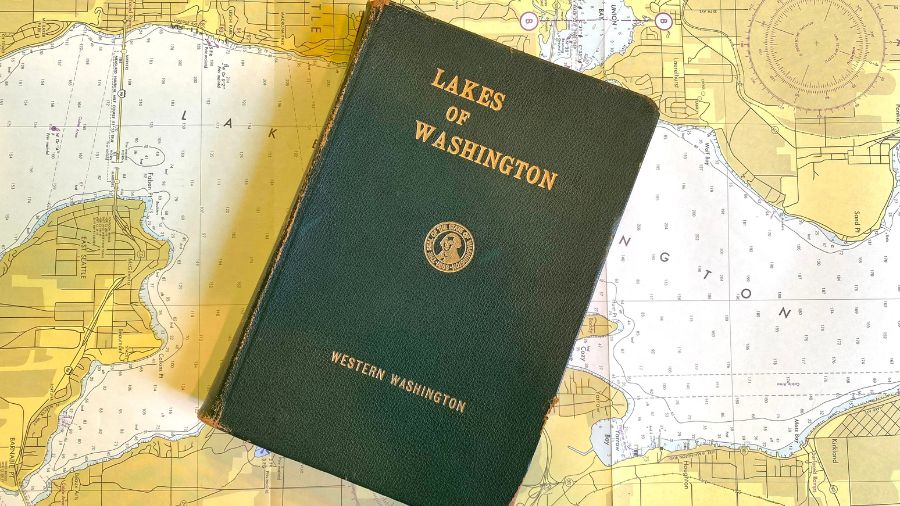Government quarantines in Washington began in the 19th century
Apr 22, 2020, 11:22 AM
Once upon a time, travelers reaching the Northwest from overseas — especially Asia — were screened by government healthcare professionals for disease, and if they were suspected of being ill, they were put into quarantine for two weeks.
By the 1870s, there were quarantine laws on the books in Washington Territory to prevent infectious diseases from coming ashore. In 1878, Congress passed the National Quarantine Act, and screening of people and cargo became a federal responsibility.
It goes without saying that the Puget Sound economy, especially before the arrival of transcontinental railroads, was almost entirely dependent on waterways for the movement of people and goods. Robust trade between the Northwest and Asia was what first attracted explorers in the 18th century, and goods were moving back and forth between Asia and what’s now Washington going back to the 1780s.
Washington became a state in 1889, and there were a series of disease outbreaks around the world – including smallpox in 1892 – around the same time. These outbreaks spurred new federal legislation, along with a push to build federal facilities in port cities to inspect passengers and cargo entering the U.S. from foreign ports.
The federal agency tasked with creating “quarantine stations” was a forerunner of the U.S. Public Health Service known as called the Marine Hospital Service (MHS).
The MHS was created in 1798, because the government at that time recognized that the health of the people who kept people and goods moving was critical to the overall economic health of the young country. What’s considered to be the first quarantine station in the United States was built in Philadelphia in 1799 after a yellow fever outbreak.
The site chosen to serve Washington state ports was Diamond Point, a 156-acre parcel on the Strait of Juan de Fuca in Clallam County, on the western edge of Discovery Bay not too far from Port Townsend. It was up and running by late 1893.
Ellie DiPietro is research center director for the Jefferson County Historical Society (JCHS) in Port Townsend, which has a large collection of photos of Diamond Point Quarantine Station that are accessible via an online database.
DiPietro says the choice of Diamond Point to serve Puget Sound made a lot of sense.
“The region decided that it needed to definitely have quarantine,” DiPietro said Monday by phone (the JCHS museum is currently closed to the public). “And since Port Townsend was the designated point of entry into Puget Sound, it was the logical place to put it.”
For the many people who might only know Port Townsend as a quaint Victorian throwback with bookstores and brew pubs and all kinds of distinctive 19th century architecture, Ellie DiPietro says it’s a path not taken that also helps explain why the Diamond Point Quarantine Station – which was a plum federal facility – was built nearby.
In the 1890s, “Port Townsend thinks that it’s going to be what Seattle actually ended up becoming – they thought that they would be the ‘San Francisco of the Pacific Northwest,’” DiPietro said.
“And so all of those Victorian things, and the Customs House and all of that infrastructure was put into Port Townsend because they thought that was going to be the place, the big city,” DiPietro said. “The quarantine station was just part of that dream that they had for the city.”
The short version of why Port Townsend didn’t become the “San Francisco of the Pacific Northwest” – and why it took a little longer for Seattle to achieve its similar dream – is because the Northern Pacific Railroad chose Tacoma for its terminus. But that’s a story for another day.
During the peak years of operation in the early 20th century, Diamond Point Quarantine Station was a sprawling complex with a big pier and nearly 30 buildings – administrative offices, and an isolation hospital – which replaced an old ship that had been used as a temporary hospital, as well as facilities for fumigating ships and cargo. The fumigation method in those days included burning pots of sulfur and pumping the fumes throughout a ship to kill rats and mosquitoes.
From 1893 until the early 1930s, all ships arriving from foreign ports and destined for stops in Washington would have to stop near Diamond Point for boarding by a health inspector.
DiPietro says that officials were looking for signs of diseases such as “smallpox – definitely don’t want smallpox running rampant – but there was also yellow fever, Bubonic plague, leprosy, spinal meningitis, [and] cholera.”
The list of diseases, DiPietro said, shows that “every one of those ways you could have died on the Oregon Trail … you could have died on a boat.”
If the crew reported illness or if inspectors found evidence symptoms, they might require that a ship anchor off the station while all the passengers and crew of the vessel were quarantined for several days.
Another option was to offload ill passengers for multi-day stays at the Diamond Point Quarantine Station’s isolation hospital and let the vessel continue on its way. There were different lengths of time imposed for quarantines to match the incubation periods that varied depending on the disease.
From an examination of old newspaper clippings, it seems like many of the passengers and crew detained were from Japan or the Philippines, with passengers typically arriving via “steerage,” the least expensive class of travel often favored, by necessity, by immigrants. During this era, the Chinese Exclusion Act prevented legal immigration from China.
Those same newspaper clippings reveal that inspectors at Diamond Point Quarantine Station were tracking multiple outbreaks of disease from the late 19th century to the late 1920s, including:
- Yellow fever, worldwide in 1897 and 1903
- A smallpox outbreak in Nome, Alaska in 1900 and other parts of the world in 1908
- Bubonic plague in India and Asia in 1900
- Beri-beri from the South Pacific in 1915
- Spanish flu from 1918 to 1920
- Meningitis in Asia 1929
By the late 1920s, the Diamond Point Quarantine Station was nearing 40 years old. The wood buildings had become run down, and the facility’s on-site supply of fresh water had failed.
Some sources describe it as a difficult place to land a boat during stormy weather, and the entire station was criticized as inadequate for responding to the 1929 meningitis outbreak, with “most meager equipment” and patients “escaping and making their way back into Seattle,” according to the Seattle Times.
During that outbreak, federal and City of Seattle authorities feared that local hospitals would reach capacity; they even considered using the old Fort Flagler military base as a temporary quarantine facility.
In March 1929, Seattle City Health Commissioner Dr. E.T. Hanley was criticized for allowing nine ailing men from a ship from Manila to be hospitalized in Seattle rather than be quarantined at Diamond Point along with the rest of the passengers and crew from the ship.
“Those men were seriously ill with meningitis,” the Seattle Times quoted Hanley as saying. “If they had been left on the ship they would have died. I have enough love for humanity not to stand by and see men die when proper hospitalization might save their lives.”
The meningitis outbreak passed, but within a few years, Diamond Point was closed and the new Point Hudson Quarantine Station was built on the east edge of Port Townsend. The new station opened in the mid 1930s, but was in operation for only a few years before it, too, was closed down in 1938.
Many of the Point Hudson buildings remained for other uses, including wartime training for the US Coast Guard, but the quarantine function was moved to the Maritime Hospital on Beacon Hill. Seattle had become the official Port of Entry for Washington state, and Port Townsend’s dream of becoming a metropolis, it seems, had suffered yet another mortal blow.
In addition to Point Hudson, smaller quarantine stations were operated at various times from the 1900s to the 1930s at Aberdeen, South Bend and Port Angeles. A large station serving the Portland area operated at Astoria, and another large station served British Columbia at William Head near Metchosin on Vancouver Island from the 1870s to the 1950s.
Nowadays, the Centers for Disease Control and Prevention operates nearly 20 quarantine stations in port and inland cities around the United States, with many located near major airports. The Seattle Quarantine Station is in the city of SeaTac and serves Washington, Oregon, Idaho, Montana and Alaska.
As the COVID-19 pandemic – with its rapid international spread and prevalence among passengers and crew members of ships – has shown, infectious diseases haven’t changed much since the 1890s.
And when it comes to travel and trade, Ellie DiPietro of the Jefferson County Historical Society says those parts of Washington’s economy haven’t changed much, either.
“The world was a very different place in the 1870s than it is today, but they were a global society [then, too] in a lot of ways,” DiPietro said. “People were able to travel long distances and diseases could travel with them, and they were also confined to really small spaces, such as a boat, and those diseases could really take over.”
But had the politics of quarantines and other government responses to infectious disease changed?
When asked if President Grover Cleveland ever sent a message via telegraph in all caps saying “LIBERATE DIAMOND POINT!”, Ellie DiPietro demurred.
You can hear Feliks every Wednesday and Friday morning on Seattle’s Morning News and read more from him here. If you have a story idea, please email Feliks here.






















